AM radio stations are rough customers. They frequently operate on the margins, both in terms of ratings and revenue. Their transmitter plants are complex and very often have been on a reduced maintenance schedule for years, sometimes decades. Those of us that understand the operation of AM transmitter plants and all their quirky behaviors are getting older. I myself, feel less inclined to drop everything and run off to the AM transmitter site when things go awry. Seldom are such efforts rewarded, much less acknowledged. Station owners are also finding that their previous demands are unrealistic. For example, time was that any work that takes the station off the air had to be done after midnight. These days, I can tell you, I will not be working at your radio station after midnight. You can find somebody else to do that work.
Thus, today, we took this particular AM station off the air from Noon until 3 pm to diagnose and repair a problem with the four-tower daytime array. Once again, this involved a shift in common point impedance and a drastic change in one tower’s current ratios.
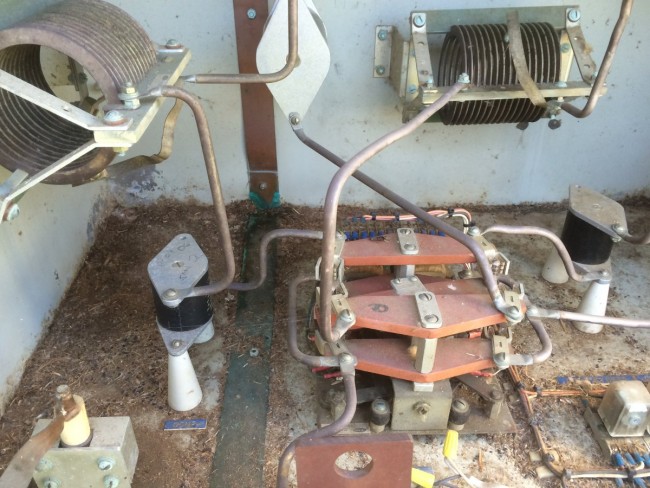
In all fairness to the current owner, this ATU reflects years of neglect. At some point, mice made a home in there and created a mess. The ATU smells of mouse shit, piss, and mothballs. It is full of mouse droppings, grass seeds, and fur. All of the ATUs in this array are in similar condition.
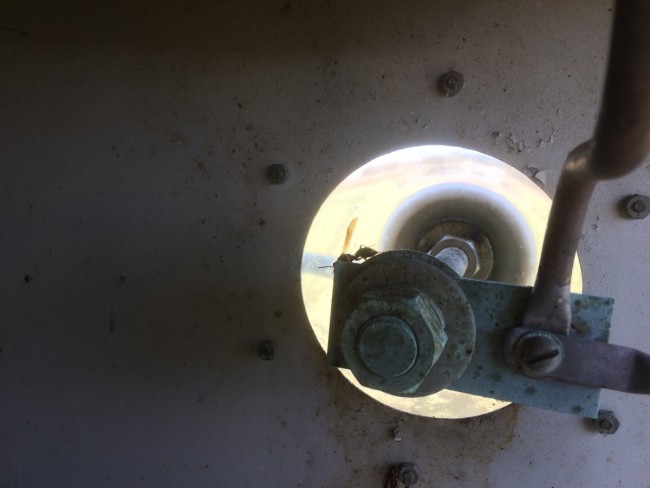
It was warm enough that the wasps were active, if not a little bit lethargic.
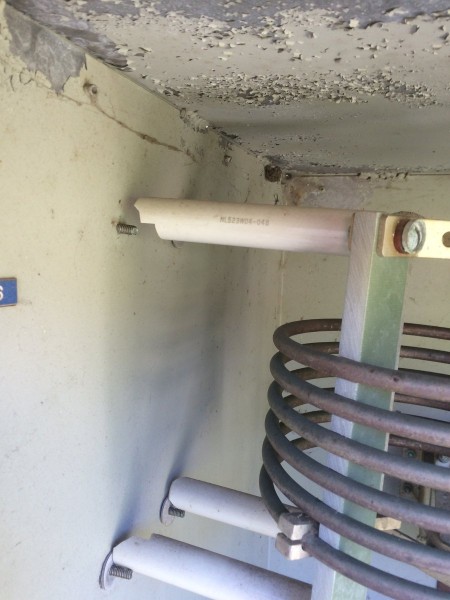
This coil is being held up by the tubing that connects it to other components. When the ATU was built, no nylon or cork bushings were used between the insulators and the wall of the ATU they were mounted on. Heat cycling eventually did all of the insulators in.
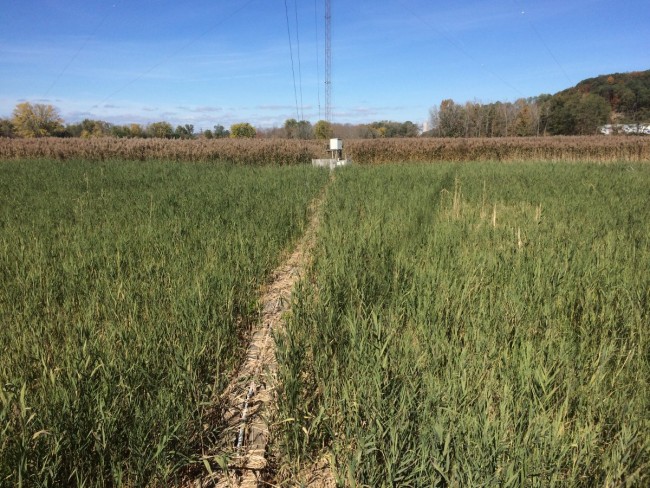
Catwalks to the other towers. At least the swamp grass has been cut this year, it is only four feet tall instead of ten.
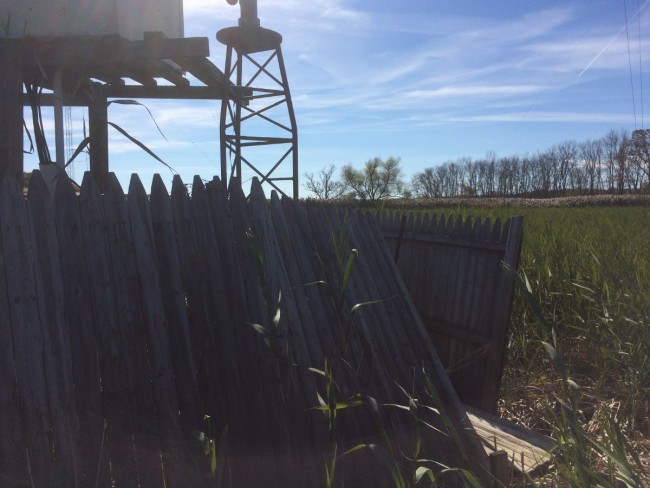
The tower bases are all elevated above the theoretical maximum water level. The ATUs are also up on stands with platforms build for maintenance access.
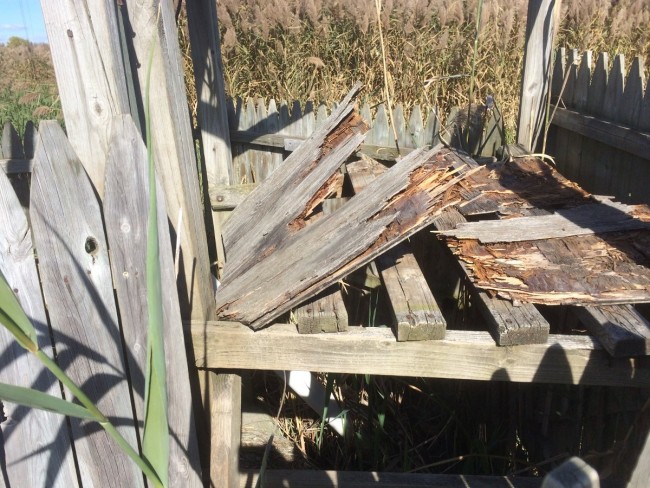
I cannot even blame the current owner, who has to spend considerable money to make repairs and upgrades to this site. It is very difficult and very expensive to catch up with deferred maintenance. Sadly, most AM stations we encounter have similar or worse problems.
I think it is too late to save many of these AM stations. The technical issues, lack of revenue, perceived poor quality, and lack of good programming are all taking their toll. At this point, the hole is so deep there is no hope of ever getting out. The FCC’s faux interest in “revitalization” followed by two years of stony indifference seems to be a final, cruel joke.






How much would AM’s similar to the one this post is about save if they went non directional with the corresponding power reduction? That was mentioned in a previous blog entry. Going from multiple ATU’s for multiple towers and a phasor to just a single ATU for a single tower should cut the maintenance/repair costs. The power reduction will drop the electric bill. Getting rid of nulls in a directional pattern may improve the listenability of the station. A single tower will be easier to broad band than a directional array, or just keep the impedance flat across. If a station is struggling to keep its facilities up, reducing the amount of stuff to maintain seems like a strategy to slow down the loosing (I wanted to say winning strategy, but reducing service area is not a way to win). If the station is somewhere vertical real estate is valuable, they could skirt their single tower and sell space on it. If the other towers in the array are in good shape, they could be grounded, detuned and space on them sold.
There are 3 stations I listen to, WAMD, WQLL, and WHGM. All of them are directional. Their patterns cover my commute fine, but my house sits in their nulls. I half wonder if I would be able to get them at home if they dropped their power but went non directional.
I used to maintain a three-tower DA sitting in a swamp, the ATU’s sat up on wooden platforms, connected by 1,800′ of wooden catwalk/cable trough sitting on cedar posts. Built in 1947.
That alone was a full time job, keeping it all in workable repair.
When these sites were built there were probably 3-4 engineers on staff. Now there is just one for 9-10 stations.
There is no way that one person can maintain a site like that properly and get anything else done.
No more overnight work here either. I’m too old, my night vision isn’t what it used to be, and without a helper it’s just too dangerous.
StvCmty; often as not dismantling the DA and running flea-power ND at night costs the station their nighttime protection.
The other DA station(s) that are protecting it can and will alter their patterns to improve their coverage and you’ll be all but gone.
The pictures you posted are sadly typical of most independently owned AM stations and even some group owned stations. In today’s plug-n-play world of circuit board swappers, the fine art of preventative maintenance has gone by the wayside.
Just like with a restaurant, once you let maintenance slide and start cutting the budget you’ll eventually lose both your customers and your business.
It’s draconian, but a lot of these stations should just go away, declutter the band and make room for those who can make a go of it.
I spend most of my field time correcting the sins of past owners. You’d be surprised how a maintenance schedule, a motivated and competent owner and local involvement can turn a neglected station around.
Paul,
Thanks for the great article on directional AM’s. Misery loves company and I feel better knowing there are others who understand where we came from and where we are now. I WISH our field and doghouses look as GOOD as the ones in your pictures! Love the blog.
Thanks.
Mark
Thanks, Mark!
Even AM revitalization won’t save that station.
AM=Ain’t makin no money!.
I only have one opinion after admiring,working and being inspired by some of the most well kept sites in the Hudson Valley and New Jersy, damn…
I turned my BE tools in a few years ago and jumped over to cell work…..No nights for me, too dangerous ..I did briefly revisit –while on the way to a project i noticed a car at a site….curious to see who/what I found an IT guy and his girl friend trying to diagnose a high voltage shutdown on a CCA —–one Im familiar with as I worked for CCA in the Ron baker days before the auction/dismantlement …anyway …I told the IT “engineer” to take off the anode of the power tube and start walking back to the diode stack…..He asked me what an anode was …..I advised him to predial 911 or call a couple of engineer phone numbers I had in my wallet
There’s been a rash of broken standoff insulators at the 5/0.6 kW site I take care of. They all have the plastic/fiber washers. However the surviving insulators are screwed on extremely tight and/or the holes are not quite lined up so there’s stress there too. The 50 kw site has had zero broken insulators. Different manufactures.
I recall that a well known group owner in the Hudson Valley sent the “IT” guy to change a tube in a 5Kw AM, ALONE, for the first time at the site, astounding!
I know I’m coming late into this conversation. With respect to the comment about AM stations going non-D at lower power, a Spanish language station down here in Rockville, MD did just that a number of years ago, and discovered that they improved coverage despite the power drop. It was once a 5kW 3-tower array on 1600 until one of the towers collapsed. They ran for years on an STA until the second tower collapsed, then decided that it wasn’t worth rebuilding the DA because the remaining stick was planted in the middle of their audience. There is a lesson there.